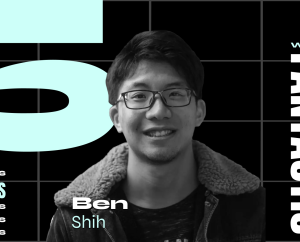The power of color is undeniable. Colors affect our behavior, mood, and thoughts; they can soothe our spirits, excite us, agitate an enemy, and empower us to take action. This is particularly evident in protests and demonstrations, where activists have learned that they can gain popularity by connecting their movement to a specific color.
Color Revolution is a term used to describe a series of popular uprisings against authoritarian regimes, occurred from the 1980’s to the 2010’s. The Yellow Ribbon Movement — emerged in the Philippines back in 1986 — is considered the origin of this revolutionary wave. However, colors haven’t been used solely in protests of political nature; more recently, social and cultural movements have also exploited colors to spread their message.
Colors is one of the themes of Design Matters 21, a hybrid conference on digital design that will take place on September 29–30, 2021 in Copenhagen and online. Get your ticket now!
Let’s take a look at some of the protests happened in last few decades where a specific color has been adopted by the masses.
YELLOW
Yellow is generally associated with the sun’s life-giving warmth and hope. That’s why in some countries yellow ribbons are displayed by families who have loved ones at war. But yellow also stands for caution; it’s often used for traffic warning signs, and in some countries — like Egypt — for mourning.
From a color psychology perspective, yellow stimulates our mental faculties; it activates the left or analytical brain. It’s related to creativity, original thought and inquisitiveness, decision-making, and the expression of new ideas and thoughts. It’s also anxiety producing and critical: yellow makes people more mentally analytical and critical of both themselves and others. So, it’s not a surprise that yellow has been adopted by many protesters around the world as the symbolic color to communicate their ideals.
Umbrella Movement — Hong Kong, 2014
The Umbrella Movement is an ongoing political movement that emerged during the Hong Kong democracy protests of 2014. Its name comes from the yellow umbrellas used as a tool for passive resistance to the Hong Kong Police, which was using pepper spray to disperse the crowd during a 79-day occupation of the city. The color yellow symbolises support for democracy, in contrast to blu that is associated with pro-government, pro-police and pro-Beijing ideals. The protesters were demandinng more transparent elections, after the Standing Committee of the National People’s Congress of the People’s Republic of China prescribed a selective pre-screening of candidates for the 2017 election of Hong Kong’s chief executive.
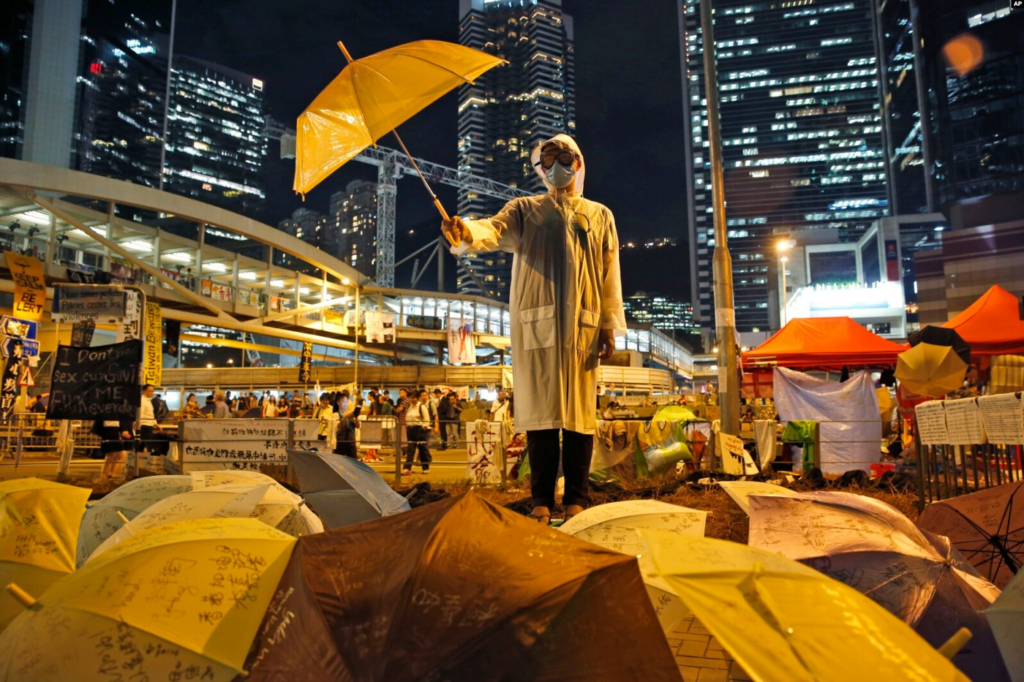
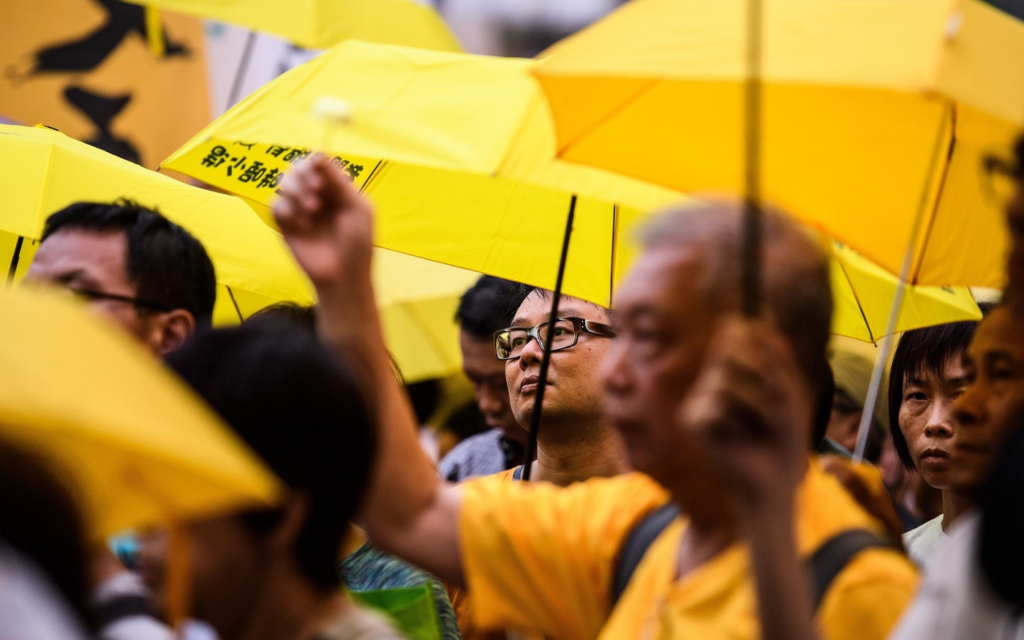

Yellow Vest Movement — France, 2018
The movement was nicknamed after the yellow safety vests — gilets jaunes in French — worn by protesters, who have to drive long distances in their daily lives. The protests were triggered by a green tax on fuel imposed by French President Macron as part of his environmental policy strategy. These protests, which started in the rural areas, quickly spread to the capital and grew into a larger movement, including members of the working and middle classes. The demonstrators — frustrated that their incomes were too high to qualify for social welfare benefits but too low to make ends meet — called for lower fuel taxes and a minimum-wage increase among other things.
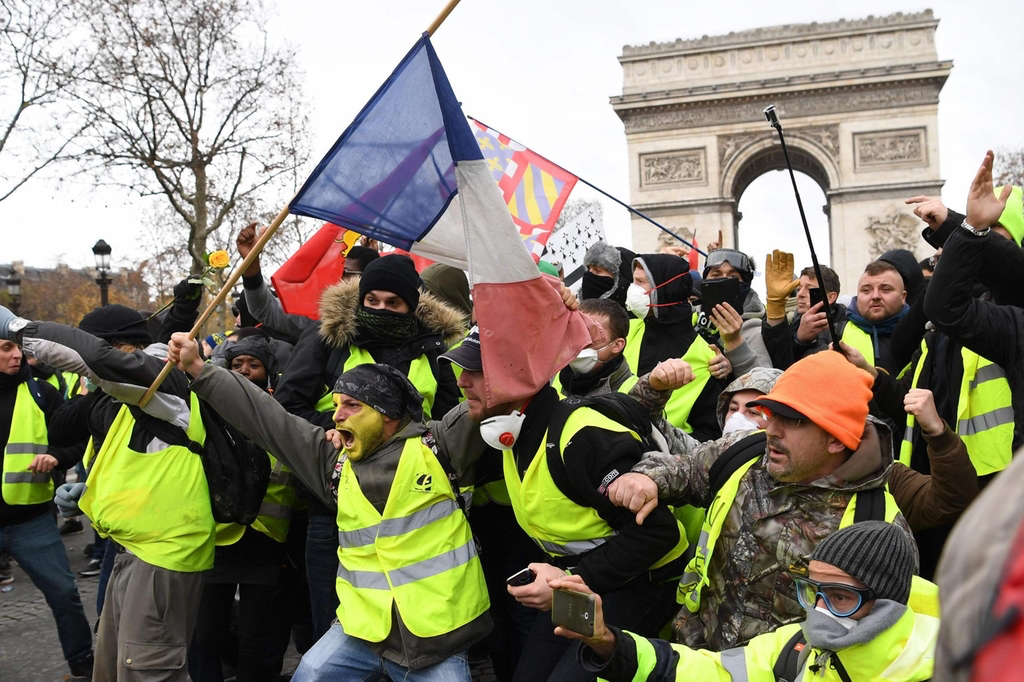
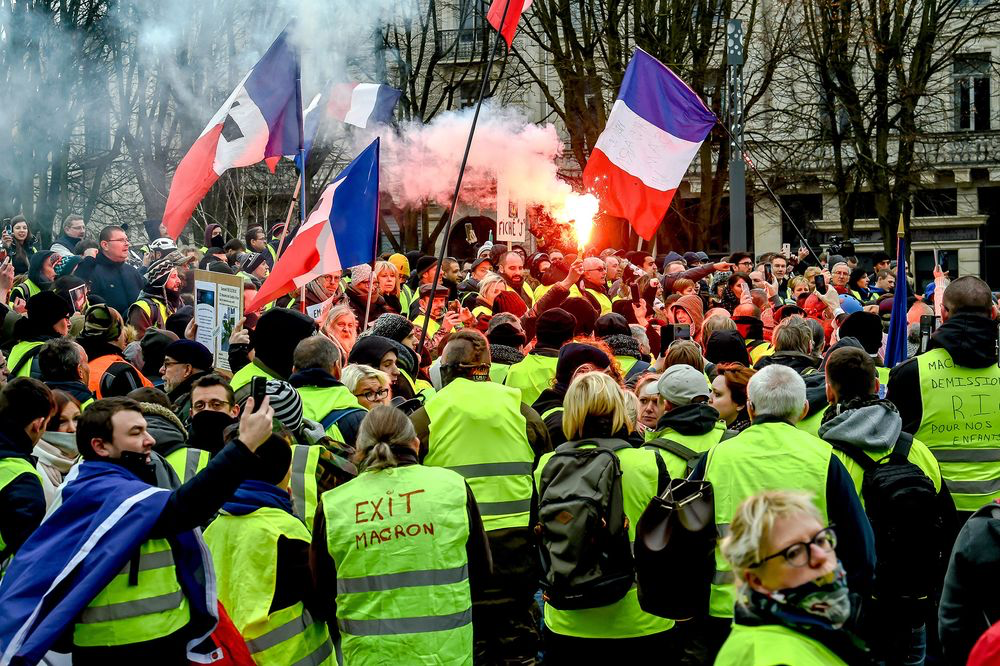
Giant Rubber Ducks — Thailand , 2020
In November 2020, thousands of Thai protesters took to the streets of Bangkok to call on King Maha Vajiralongkorn to give up control of a royal fortune valued in the tens of billions of dollars. The protesters wanted to reverse the changes that gave him personal control of the royal wealth and some army units. The demonstrators also called for Prime Minister Prayut Chan-O-Cha to resign, for a rewrite of the army-drafted Constitution, and for reforms to the monarchy. Yellow ducks became a protest symbol by accident; when the police mounted a crackdown on a rally, protesters deployed giant, inflatable yellow ducks as protection from the tear gas and chemical-laced water fired by the police. Within days, yellow ducks became a staple among street vendors at protests; the birds were featured on everything — from hats to hair clips.
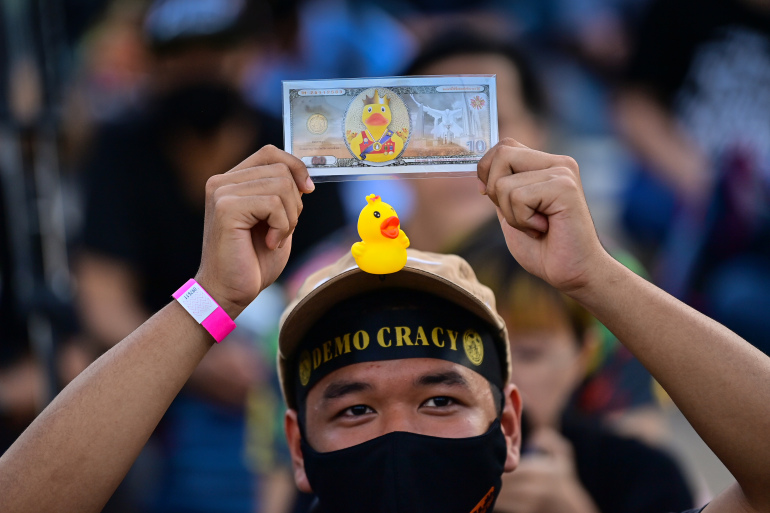
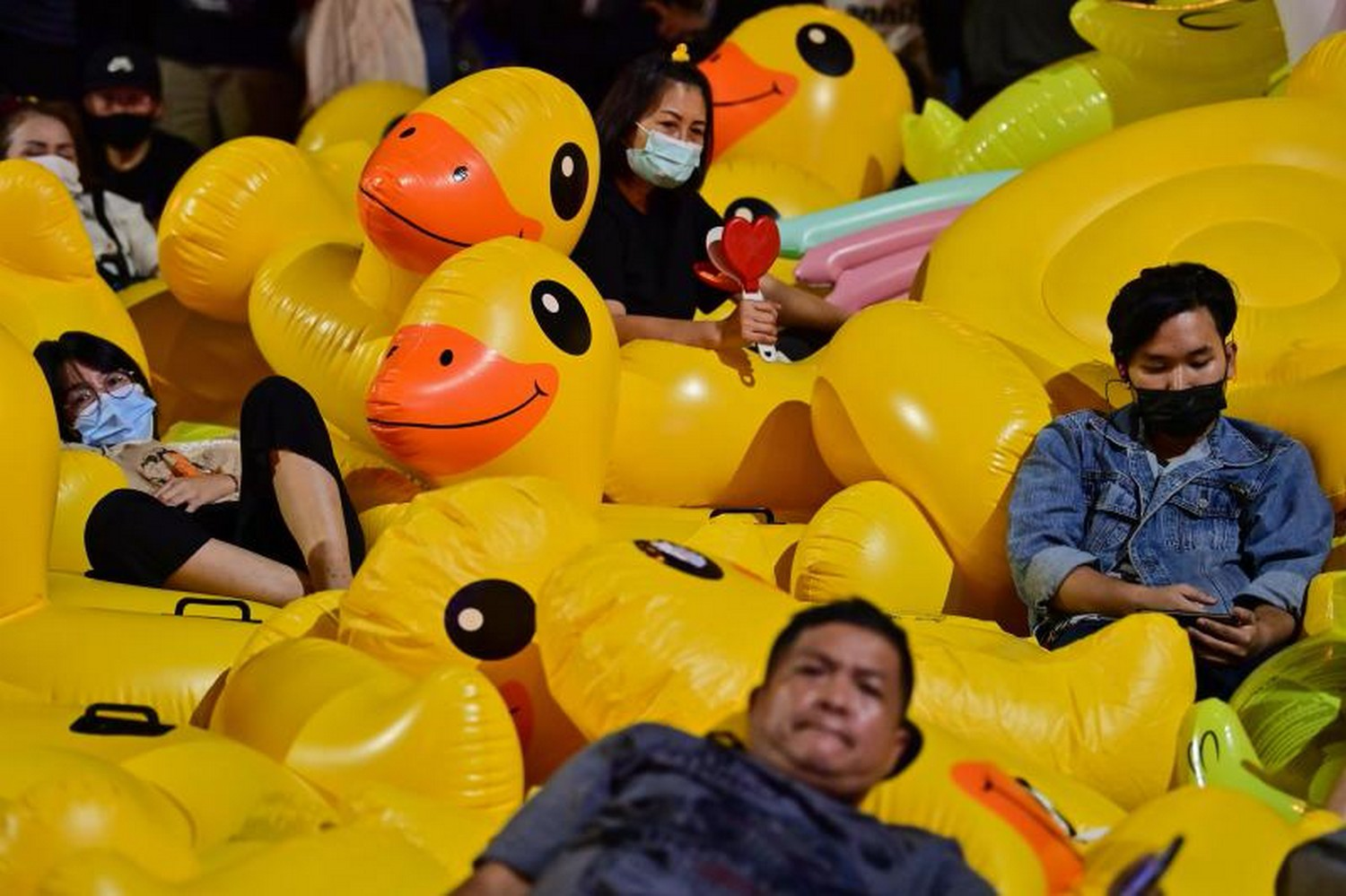

RED
Red is associated with fire, blood, violence, anger, and it frequently indicates danger — e.g. stop lights and signs or warning labels are often red. But it’s also associated with love, passion, and importance — think of the red carpet at celebrity events.
In color psychology, red is a physical stimulant; it can speed up our heart rate, blood flow and body temperature. Red stimulates the adrenal gland, making us more prone to take action. For this reason red is considered an energy booster, a stimulator, exciting and motivating, attention-getting and assertive. That’s why red has been used in many movements to capture attention and elicit emotion. However in some countries, like China, red is the color of prosperity; or in South Africa red is the color of mourning.
Saffron Revolution — Myanmar, 2007
Mass protests erupted in Myanmar in 2007, sparked at first by the decision of the national military government to remove subsidies on the sales prices of fuel. The decision caused diesel and petrol prices to increase by 66–100%. But public anger quickly turned against the military government that had ruled the nation with an iron fist for 50 years. The protest movement was named Saffron Revolution after the saffron-colored robes worn by Buddhist monks, who were at the forefront of the demonstrations. This Revolution marked a stepping stone in Myanmar’s march toward democratic rule; in 2015, Aung San Suu Kyi — who was leading the National League for Democracy — won the general elections. This was Myanmar’s first non-military government in 54 years.
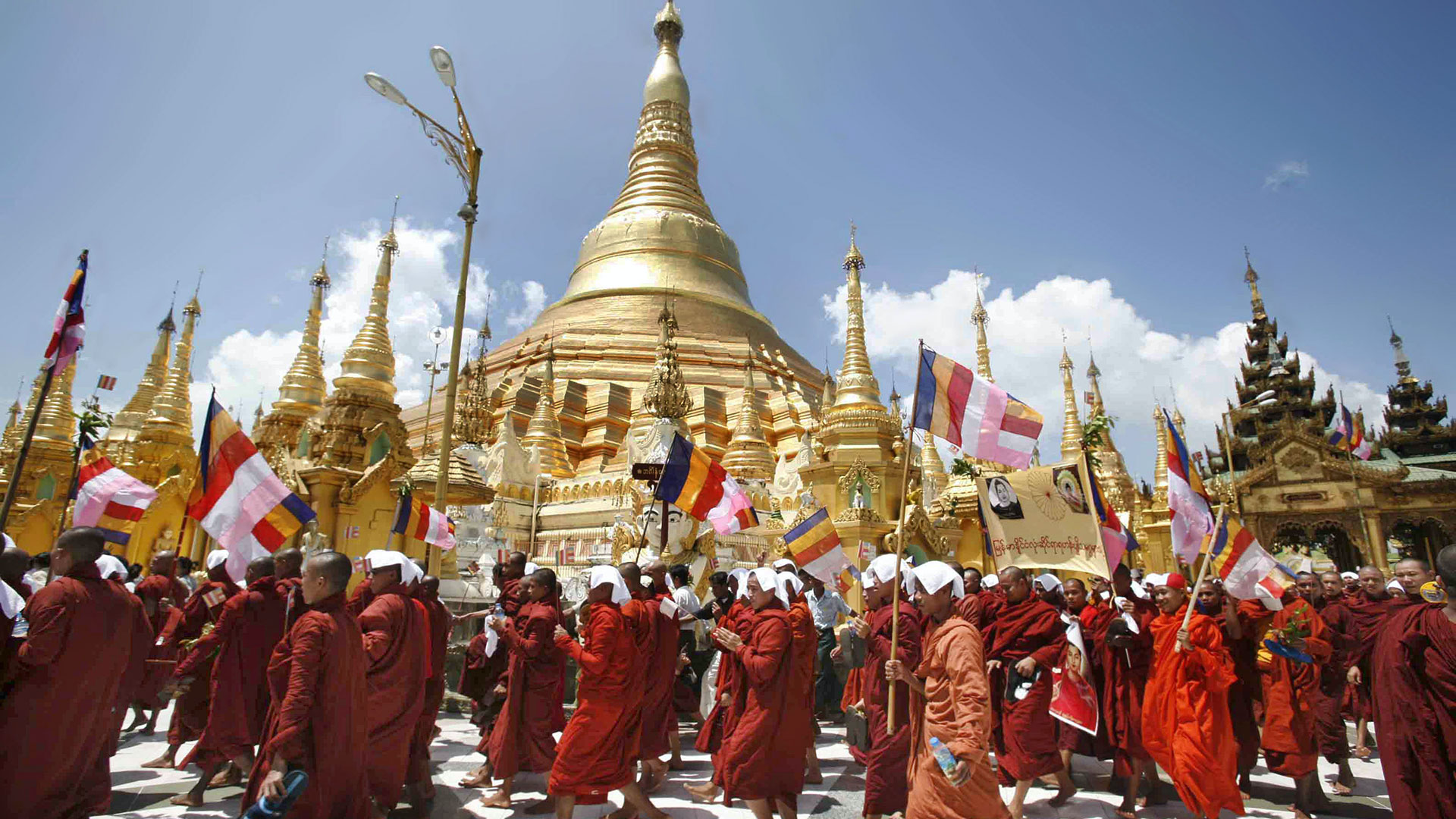
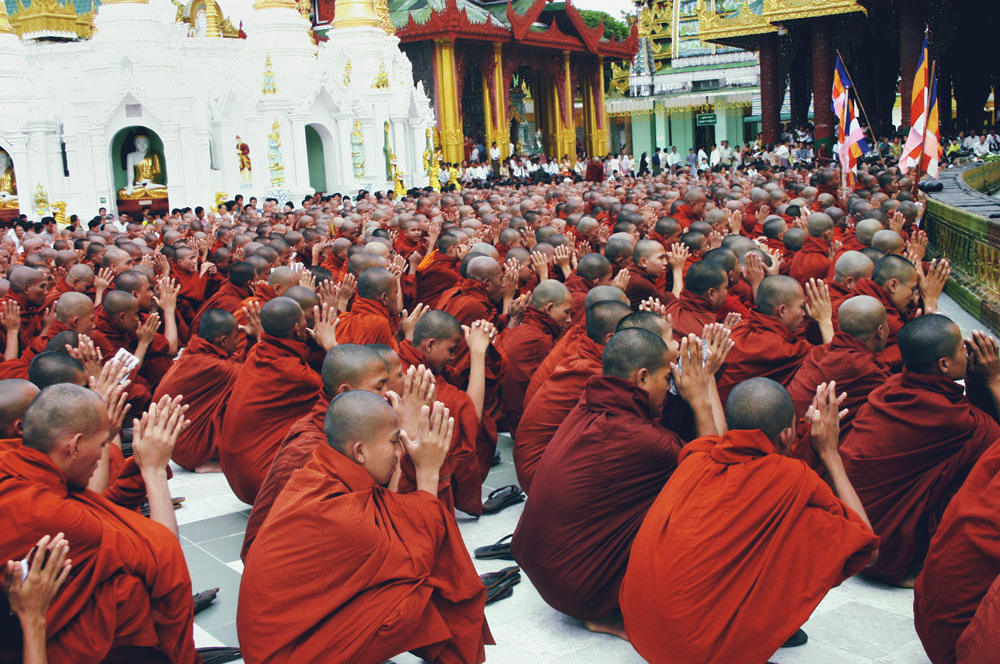

Extinction Rebellion — United Kingdom, 2019
First established in the UK in May 2018, Extinction Rebellion is a global environmental movement using nonviolent civil disobedience to compel government action on the climate crisis. In October 2019, a ten day Extinction Rebellion protest hijacked a mainstream political discourse in London; the demonstrators drifted in total silence through lines of police and people to focus the world’s media on the urgent need to tackle climate change. The crimson red cloaks worn by these ghostly-white figures— the Red Brigade — symbolises the blood that all species on the planet have in common. The Red Brigade, created by street performance group the Invisible Circus, started in the 90’s doing statue slow motion demonstrations around Europe. Later, they appeared politically during protests against the Iraq War in 2001, and in 2019, they joined Extinction Rebellion. Different Red Brigadegroups have appeared all over Europe and in Australia.
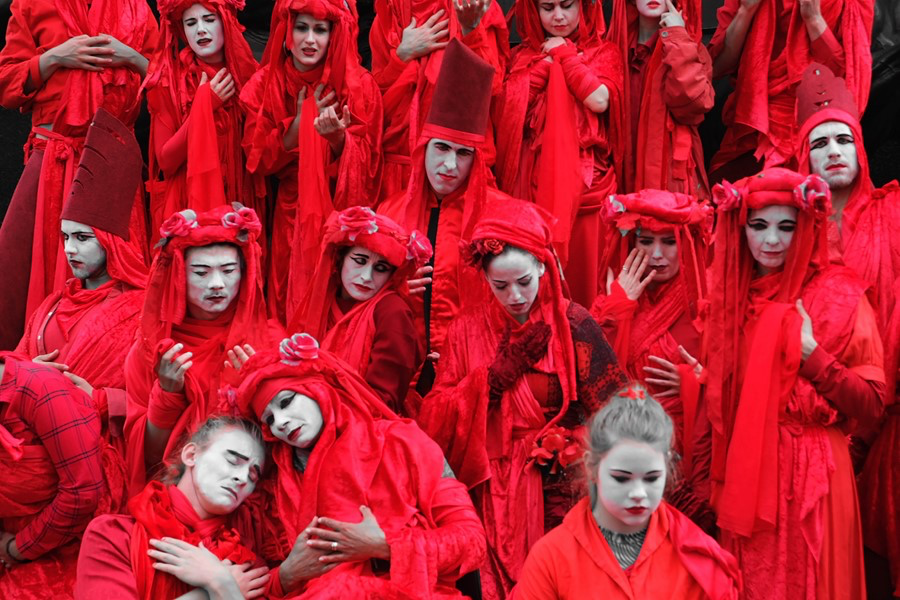
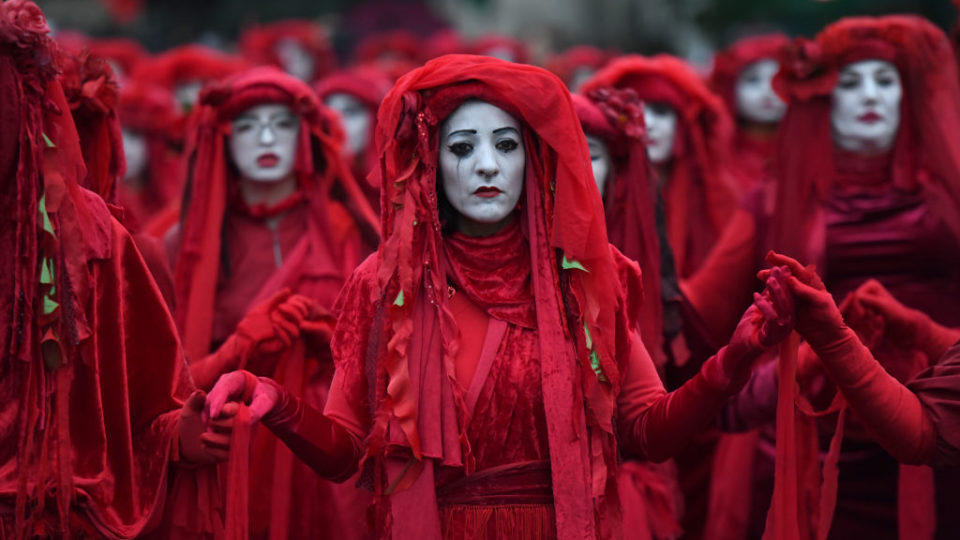
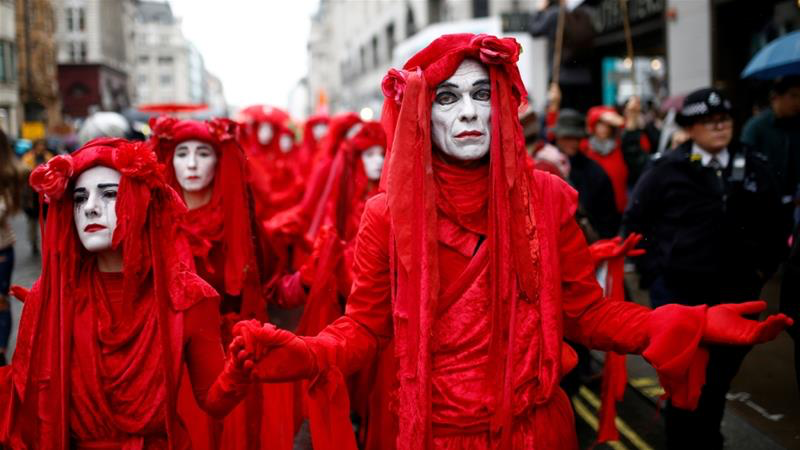
Protests against abortion law — Poland, 2021
The protest began when Poland’s constitutional tribunal ruled, in October 2020, that abortions due to foetal defects are unconstitutional. This new ruling going into effect would mean that abortion will only be permissible in Poland in the case of rape, incest or a threat to the mother’s health and life — which make up only about 2% of legal terminations conducted in recent years. The government, led by the conservative Law and Justice party had repeatedly attempted to further restrict Poland’s abortion laws in the past. In 2016, one such attempt led to a country-wide women’s strike. It’s in these strikes that feminist activists started wearing the distinctive, attention-grabbing red lightning bolt as symbol of protest.
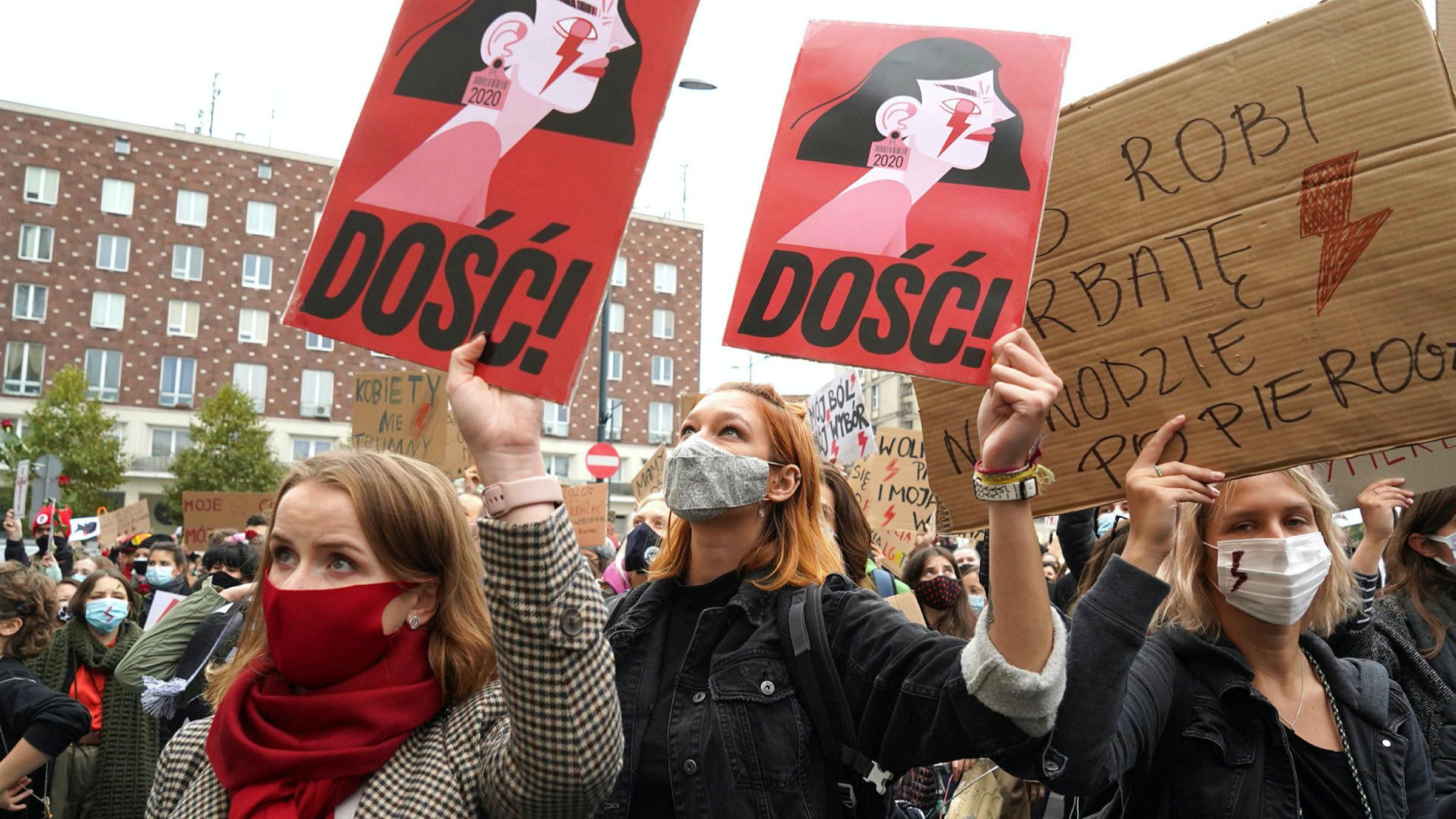
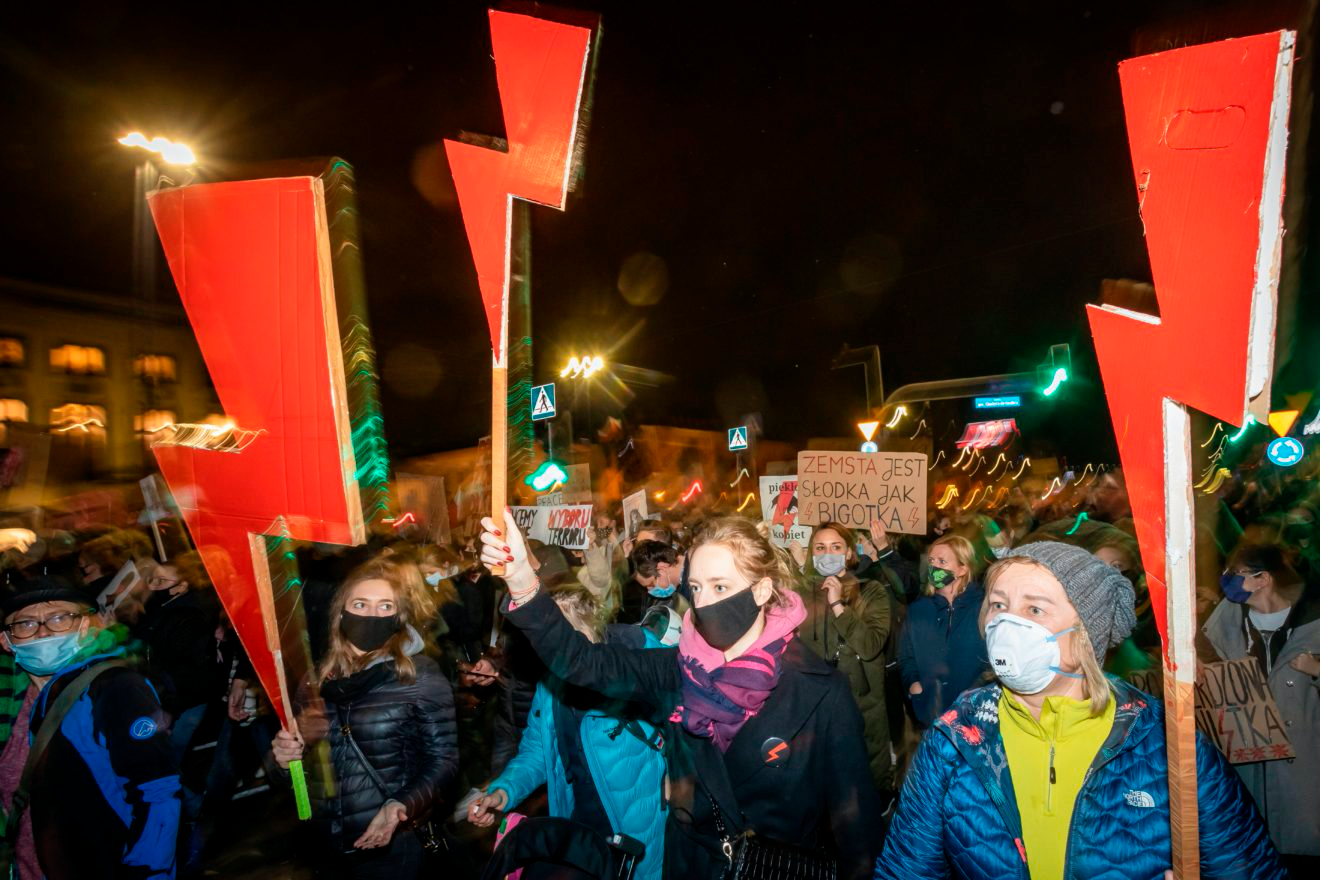
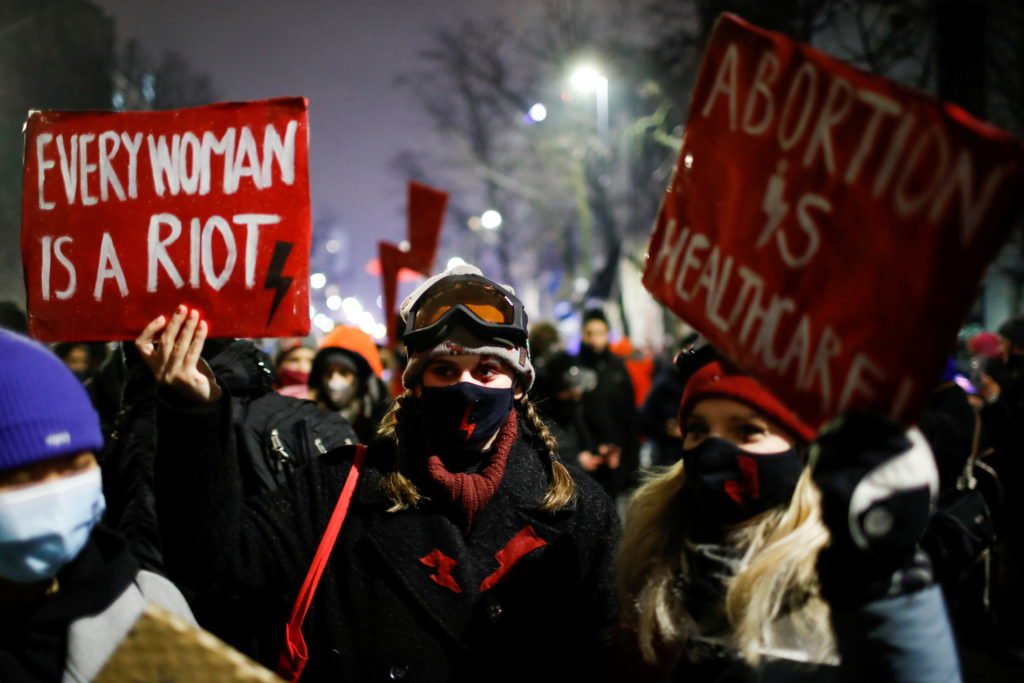
#негрустивсебудетхорошо — Russia, 2021
Thousands of Russians are posting photos of themselves wearing red clothes on social media to show support for jailed Kremlin critic Alexei Navalny and his wife Yulia Navalnaya. During her husband’s court hearing in February 2021, Navalnaya was seen crying while the judge was reading out her husband’s sentencing. “Don’t be sad, everything will be fine” (не грусти все будет хорошо in Russian), said Navalny to Yulia as he was led from the courtroom. The next day, journalist Katya Fyodorova called on readers to show support for Navalnaya and the thousands of detained pro-Navalny protesters across Russia. She instructed her followers to turn Navalny’s last words to his wife into a hashtag (#негрустивсебудетхорошо) and to post selfies in red, since Yulia was wearing a red sweater at the court.
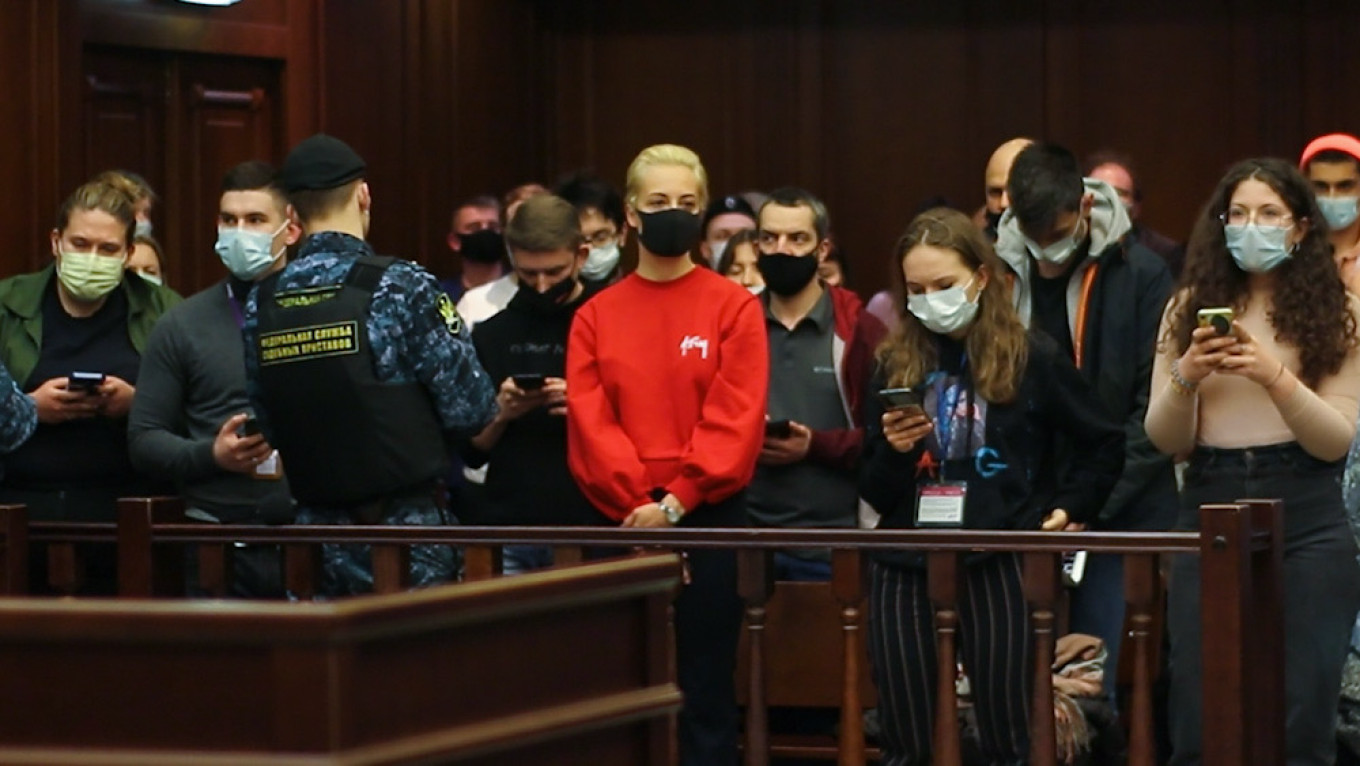
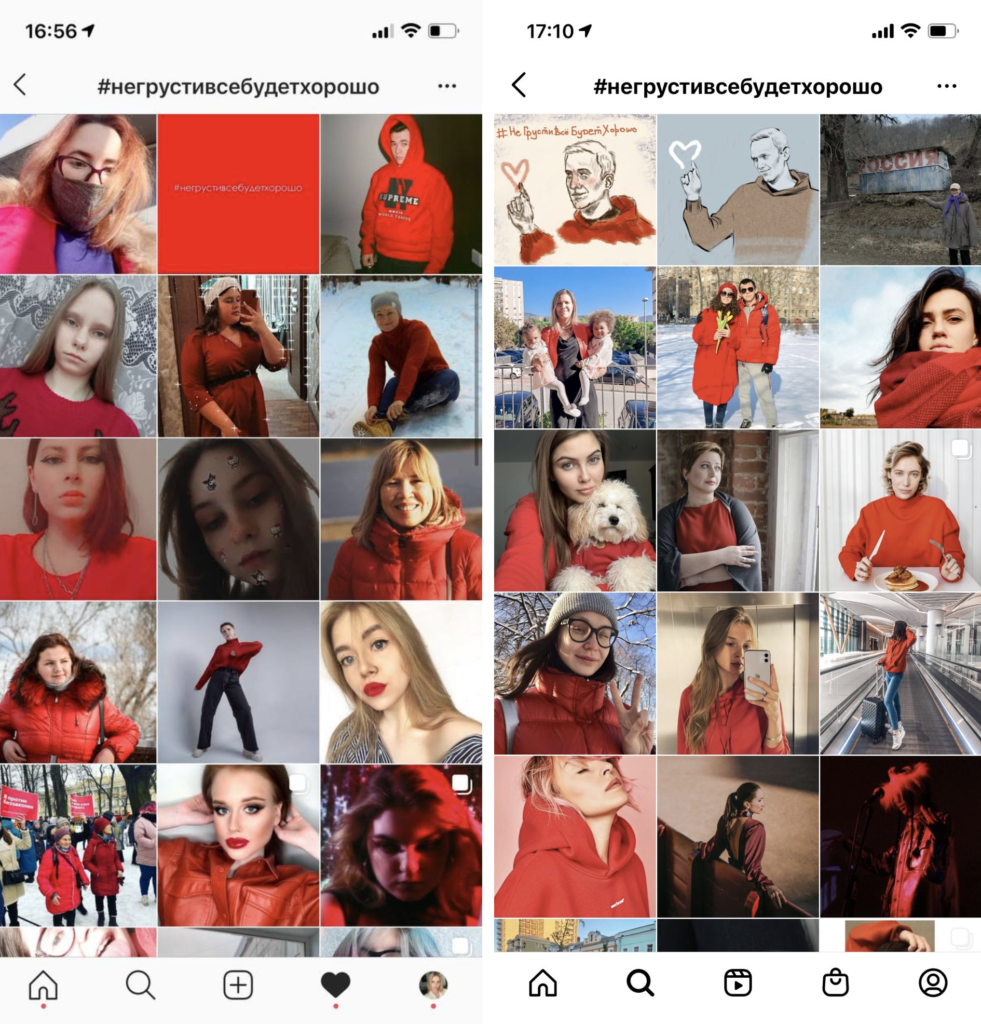
GREEN
Green is the color of growth, new beginnings, renewal, and balance. It’s considered dependable, agreeable and diplomatic. Green is a symbol of prosperity — it’s associated with eternal life in Japan, and it’s the sacred color of Islam. Green is also associated with progress — think about giving a project the “green light”.
In color psychology, in the presence of green, your pituitary gland is stimulated; your muscles are more relaxed, and your blood histamine levels increase, which leads to a decrease in allergy symptoms and dilated blood vessels. In short, green is calming, stress-relieving, and–a bit paradoxically–invigorating.
Green Movement — Iran, 2009
Named the Green Movement after the color green, symbol of opposition candidate Mir-Hossein Mousavi, the 2009 post-election protests became an emblem of unity for opponents of hardline President Mahmoud Ahmadinejad. After some demonstrations, security forces succeeded in crushing the dissent. The violence ended with at least 80 people killed, 2.500 arrested, and many tortured in prison.
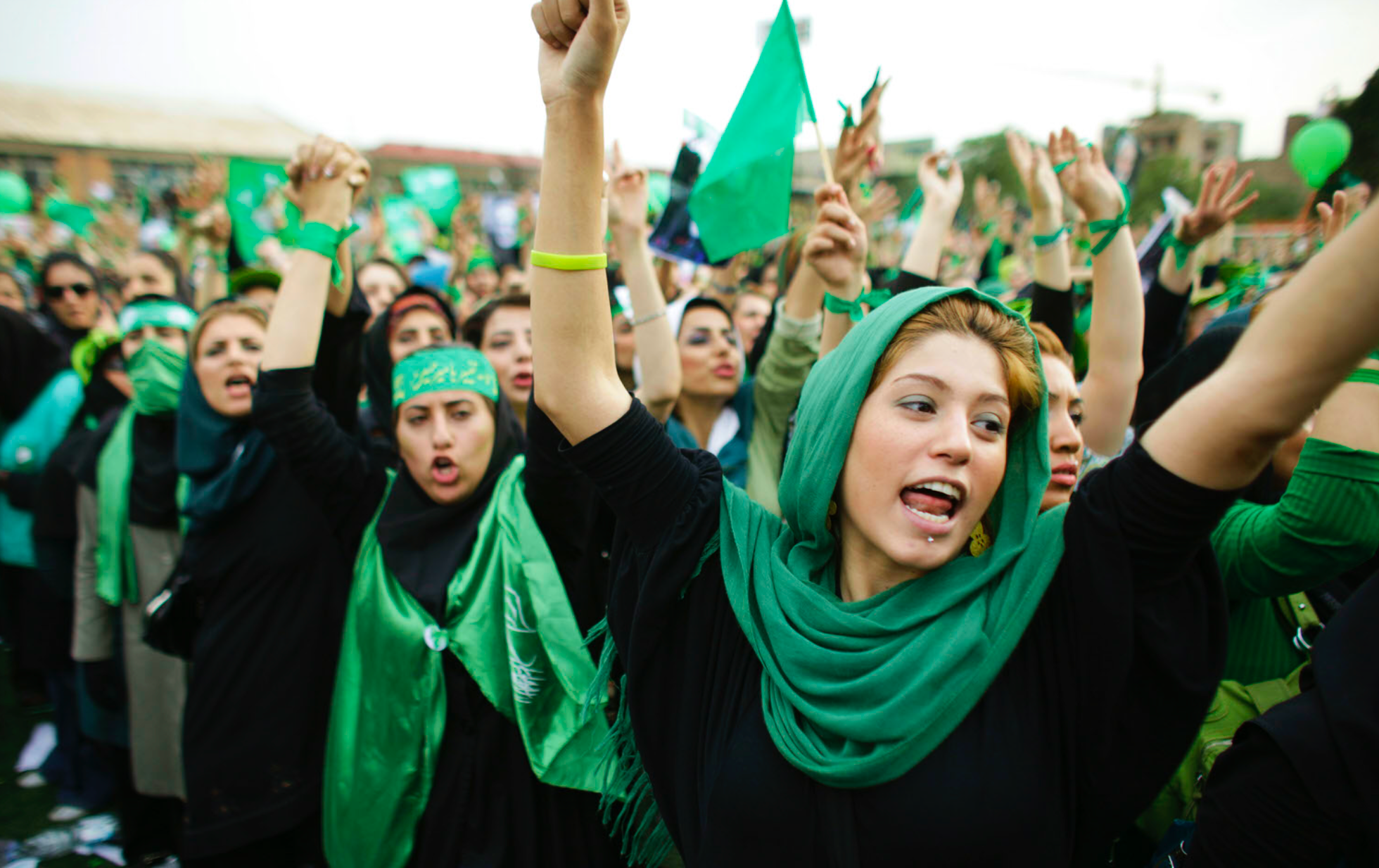
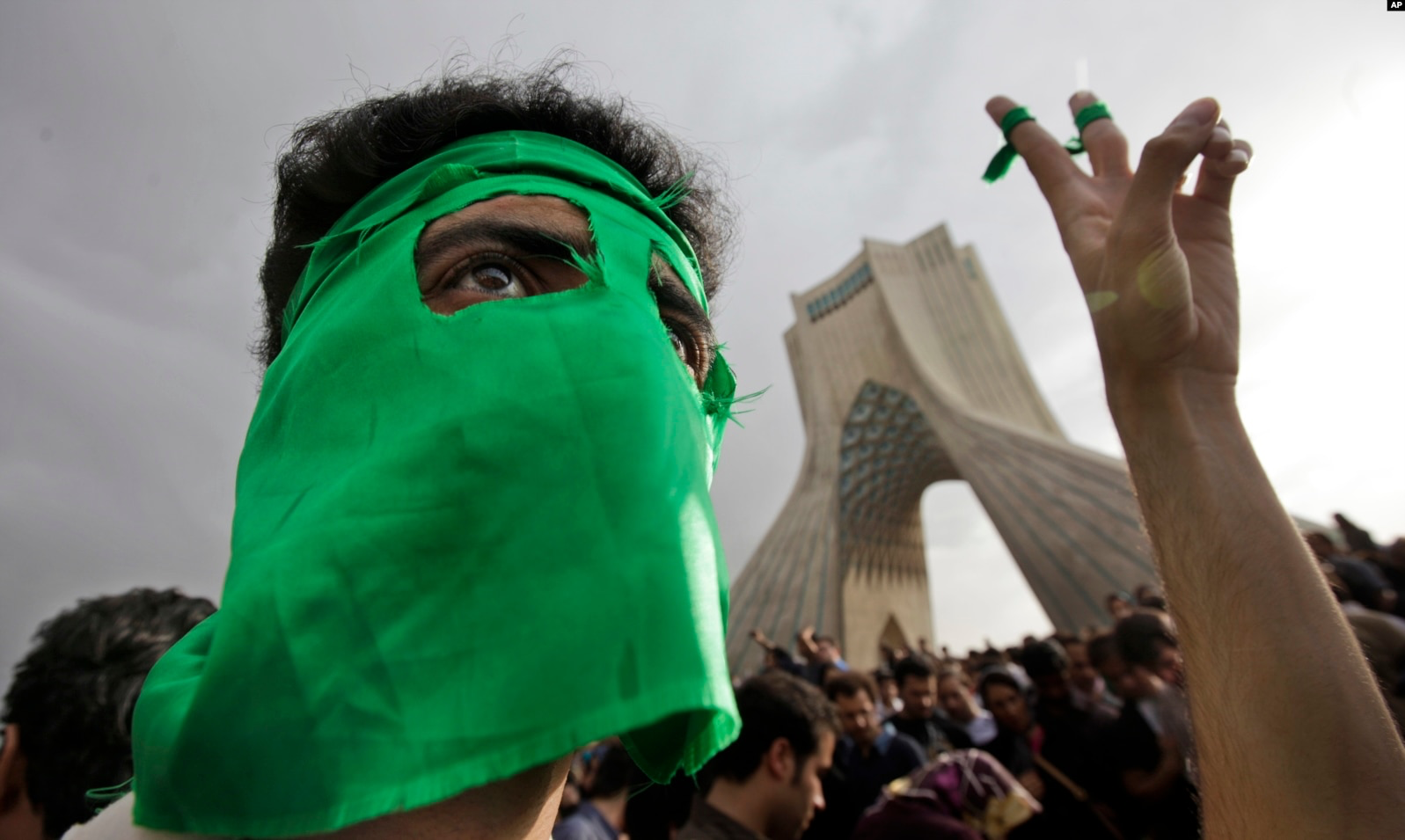
Demonstrations to legalise the abortion law — Argentina, 2018
After two years of demonstrations, in December 2020 Argentina’s Congress finally legalised abortions up to the 14th week of pregnancy — a ground-breaking move for a region that has some of the world’s most restrictive termination laws. Massive crowds of abortion rights activists and anti-abortion campaigners gathered outside the Palace of the Argentine National Congress to await the results, which came in the morning after an overnight debate. Supporters of the bill greeted the news with cheers tears of joy.
It isn’t clear when the pro-abortion movement became associated with green, but for many, green— handkerchiefs, posters, flags, lights — has become a symbol of freedom and autonomy, as well as a symbol of women’s rights. Already in 1921, pro-choice activists had campaigned to change the abortion laws adopting a green scarf as their symbol.
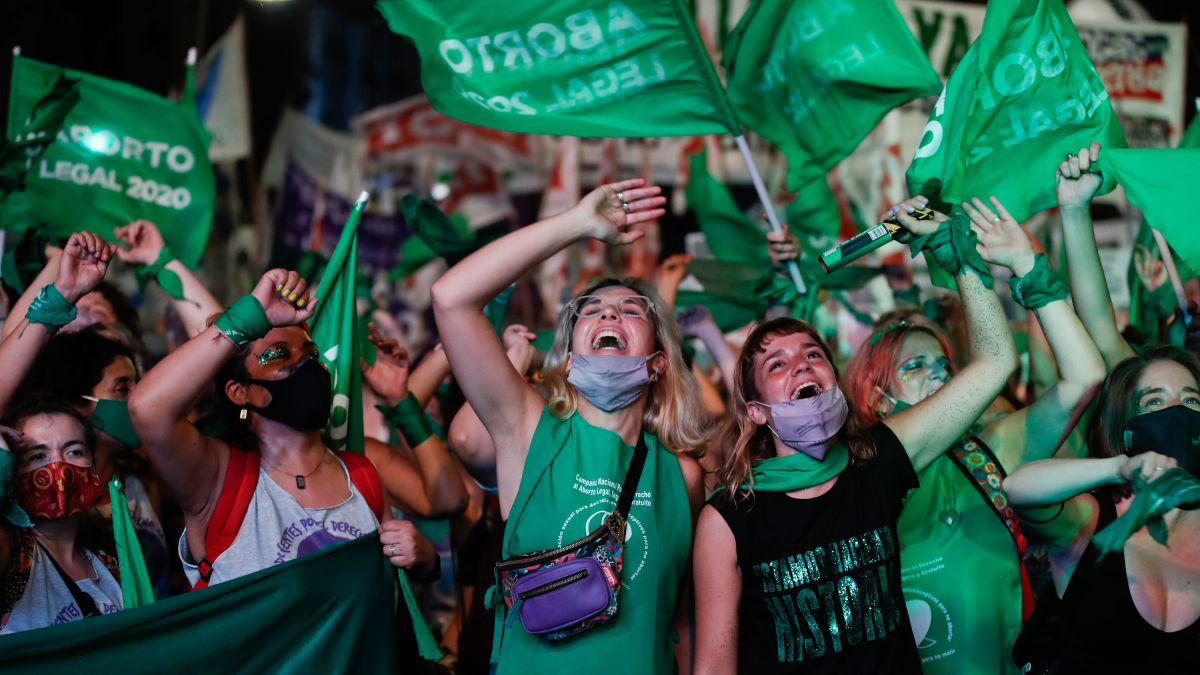
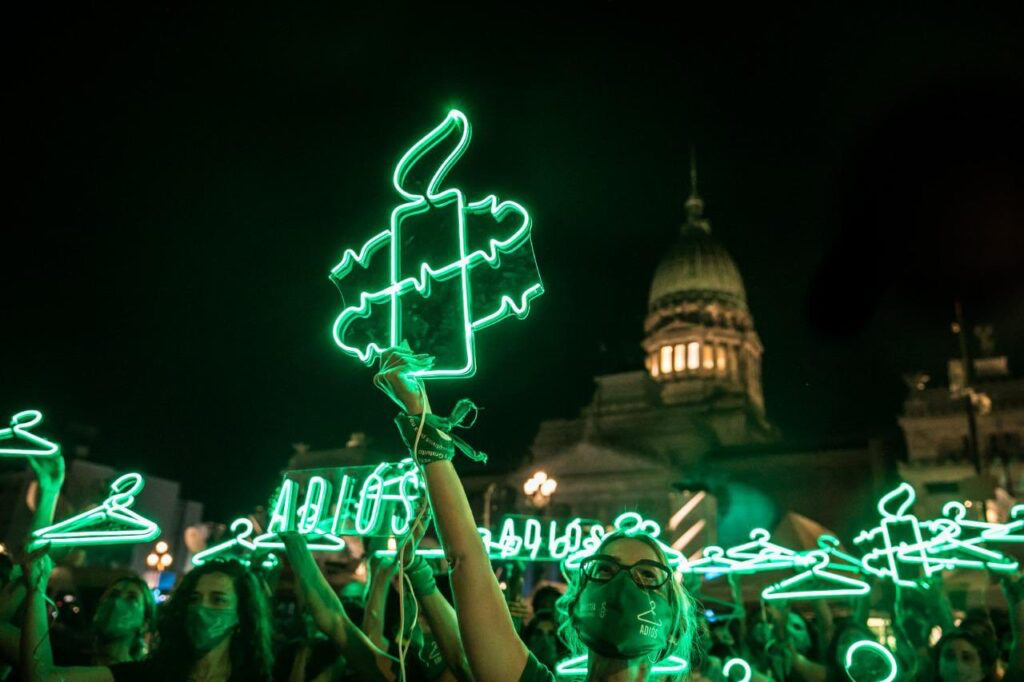
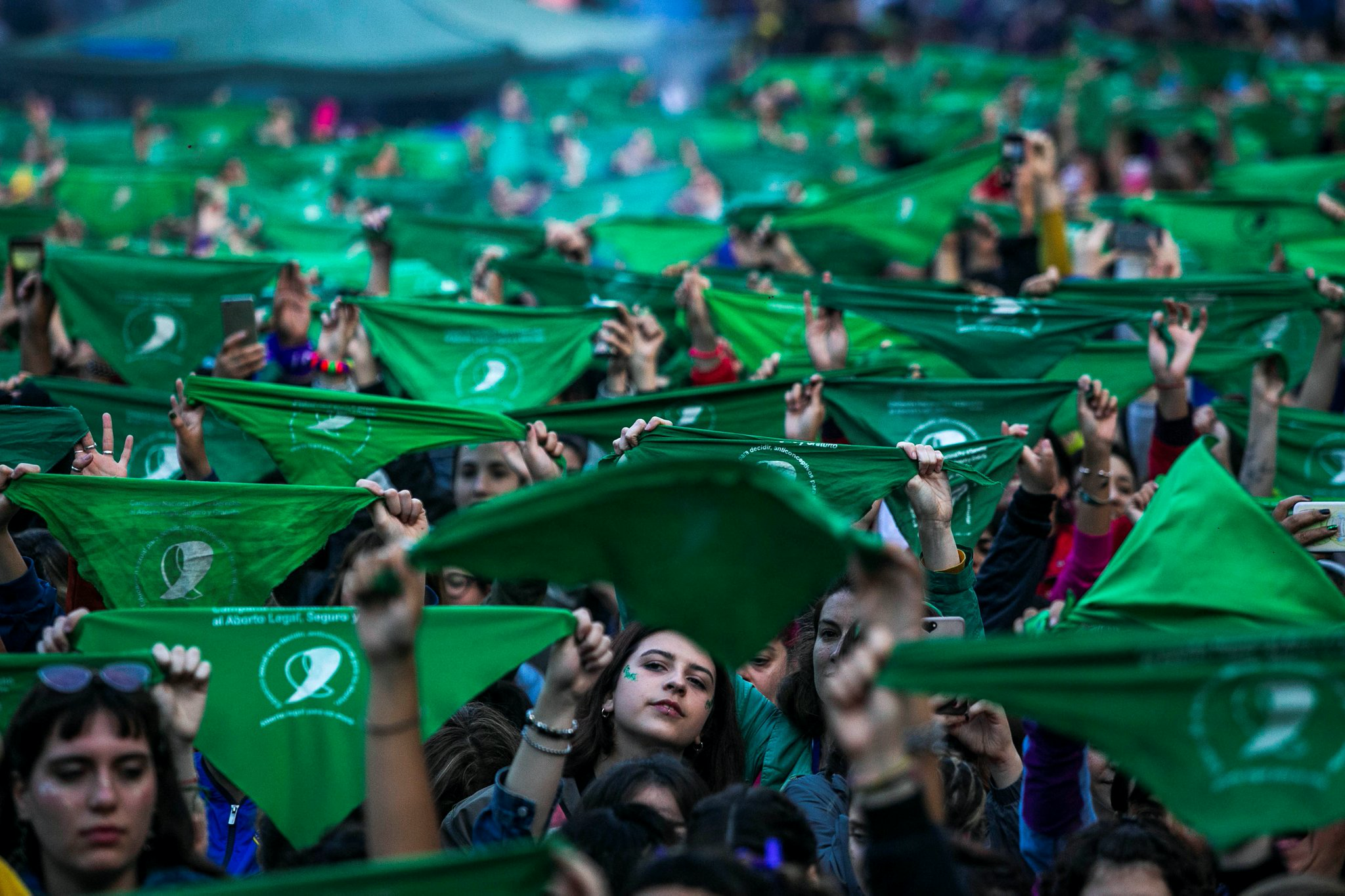
BLUE
The color blue is often associated with peace, idealism, wisdom, and has spiritual and religious connotations in many cultures and traditions. Blue relates to communication and self expression, but also authority and order, — this explains why it is often a symbol of conservativism in politics. Blue also conveys reliability, calmness and responsibility.
From a color psychology perspective, there’s a reason why blue is seen as relaxing; it tends to lower our heart rates, blood pressure, and even our body temperature. It can have an effect on the pituitary gland, affecting our sleep patterns, and it can slow our breathing as well. Studies of memory have demonstrated that memory is enhanced by blue light.
Blue Revolution — Kuwait, 2002
The history of this movement spanned from the 1960s — when Kuwait won independence from the United Kingdom — , through the Iraqi occupation in 1990–1991, and onward another 15 years, when a series of nonviolent actions occurred. In 2002, women held a demonstration near two voter registration centers, and during the elections in 2003, they established mock ballots that allowed hundreds of women to cast symbolic votes for real candidates. Finally, in March 2005, 1.000 people surrounded the Kuwaiti parliament, and in May, a bill was passed granting Kuwaiti women the right to vote and run for an elected office. Many women wore pale blue to represent the struggle for suffrage, leading to the name the Blue Revolution.
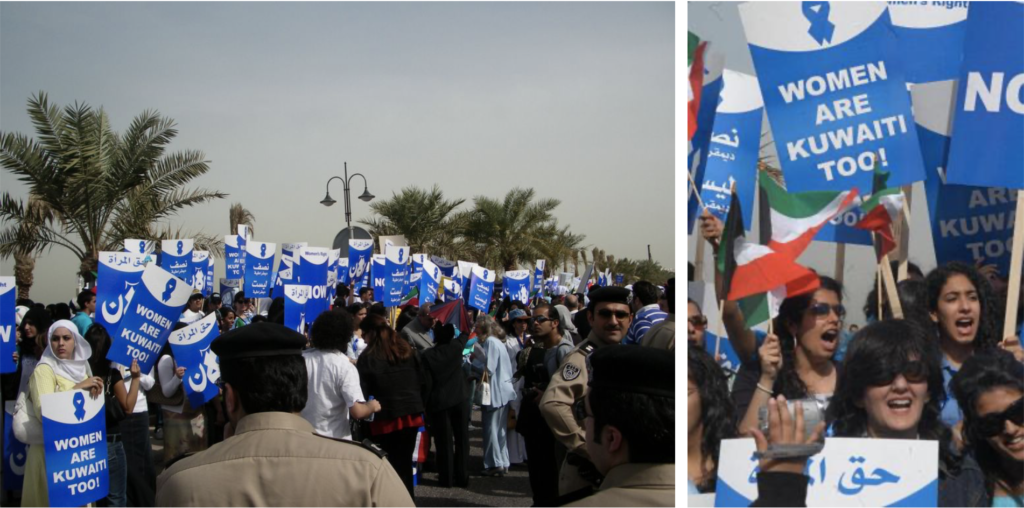
PINK
The color pink generally represents nurturing and love. It is usually associated with femininity, but also with the innocence and playfulness of childhood. In color psychology, pink is non-threatening, calming and reassuring; so often seen as a sign of hope. Pink is such an effective mood regulator that too much of it can even be physically draining. Studies have confirmed that exposure to pink can have a calming effect on the nerves and create physical weakness in people; violent and aggressive prisoners have been successfully calmed by placing them in a pink room for a long enough amount of time.
Pussyhat protests — USA, 2017
Pussyhats are a pink, knitted hats, created in large numbers by thousands of participants involved with the United States Women’s March. The color pink, representing feminism and women’s right, was used for the hats as a symbolic color. The March — which was the largest single-day protest in USA history— took place in January 2017, the day after the inauguration of President Donald Trump. The demonstration was prompted by the fact that several of Trump’s statements were considered by many as anti-women. The goal was to send a bold message to the new administration on their first day in office, and to the world that women’s rights are human rights.
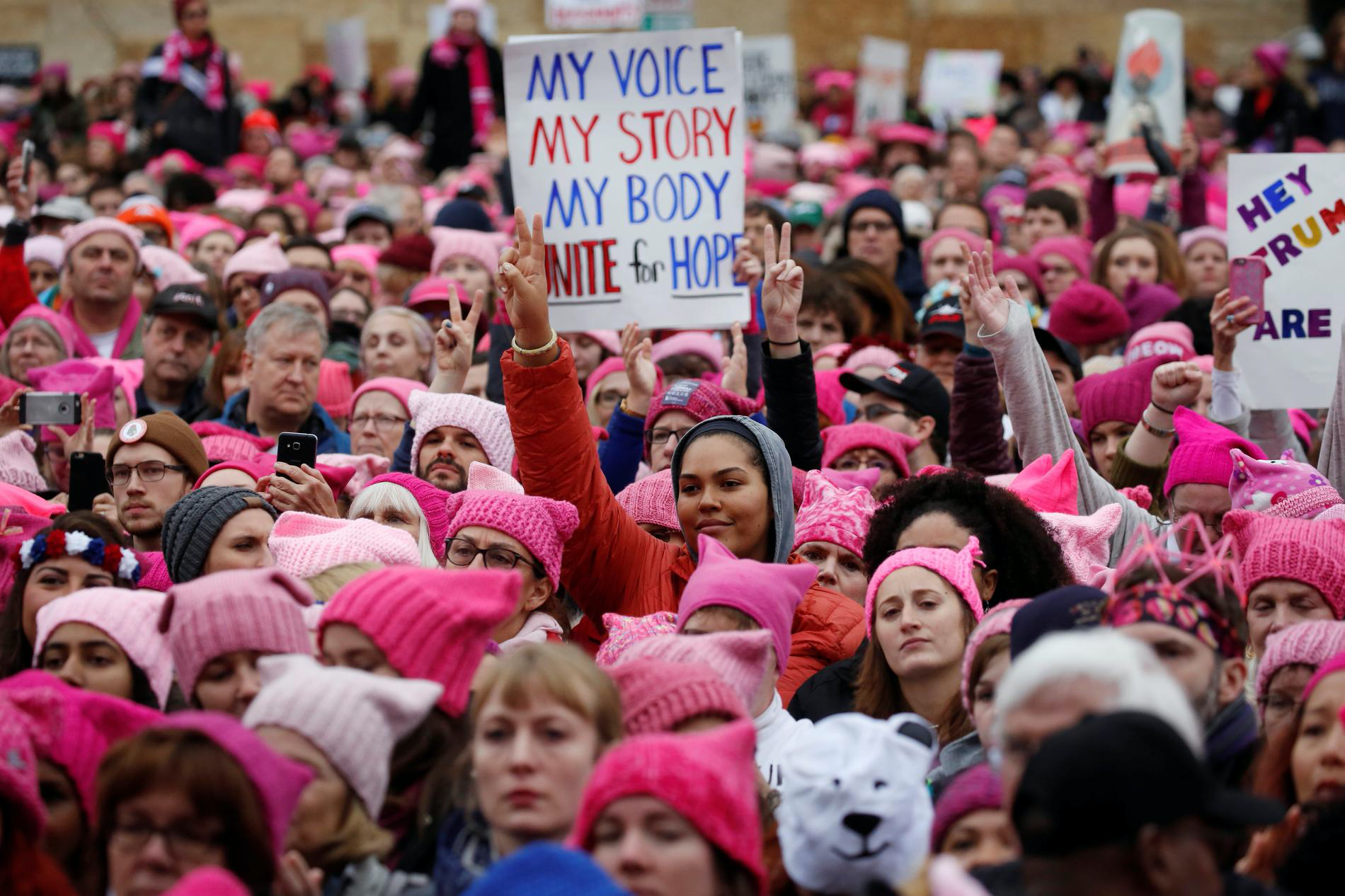
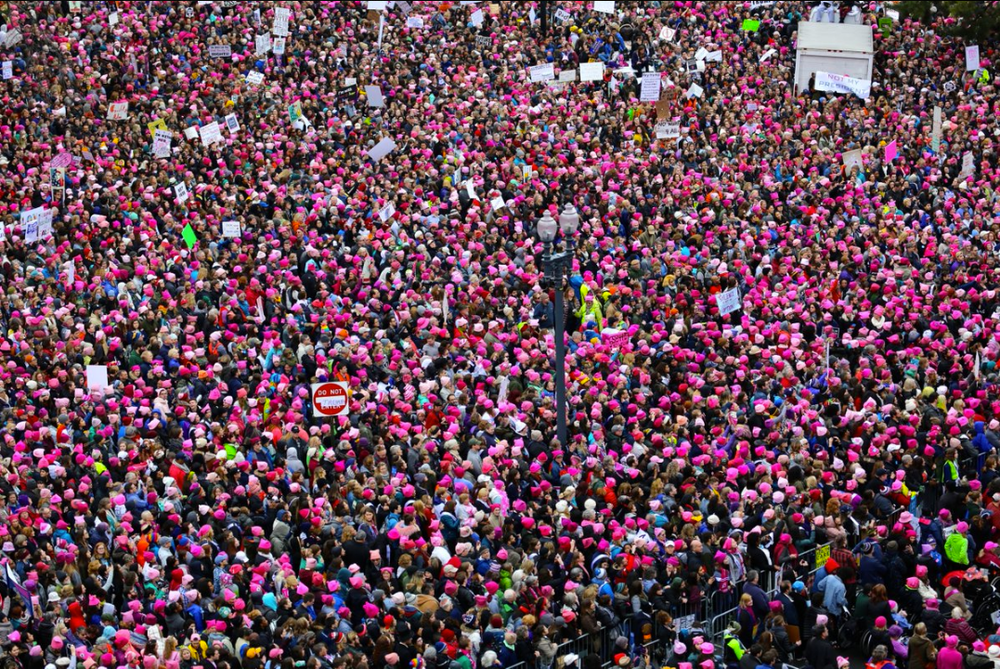
Tulip Revolution — Kyrgyzstan, 2005
The Tulip Revolution indicates a series of popular uprisings that began after parliamentary elections, in February and March 2005. The revolutionaries alleged corruption and authoritarianism by Akayev, his family, and supporters, which caused Akayev to flee to Kazakhstan and then Russia. In April 2005, Akayev finally signed his resignation statement in the presence of a Kyrgyz parliamentary delegation at the Kyrgyz embassy in Moscow. The leader himself coined the term Tulip Revolution; in a speech, he warned that no such Color Revolution should happen in Kyrgyzstan. In this case, pink not only refers to one of the many colors tulips can come in but it also represents a message of hope. Using a color/floral term also evoked similarities with the Rose Revolution in Georgia (2003), the Orange Revolution in Ukraine (2004), and the Czechoslovak Velvet Revolution (1989).

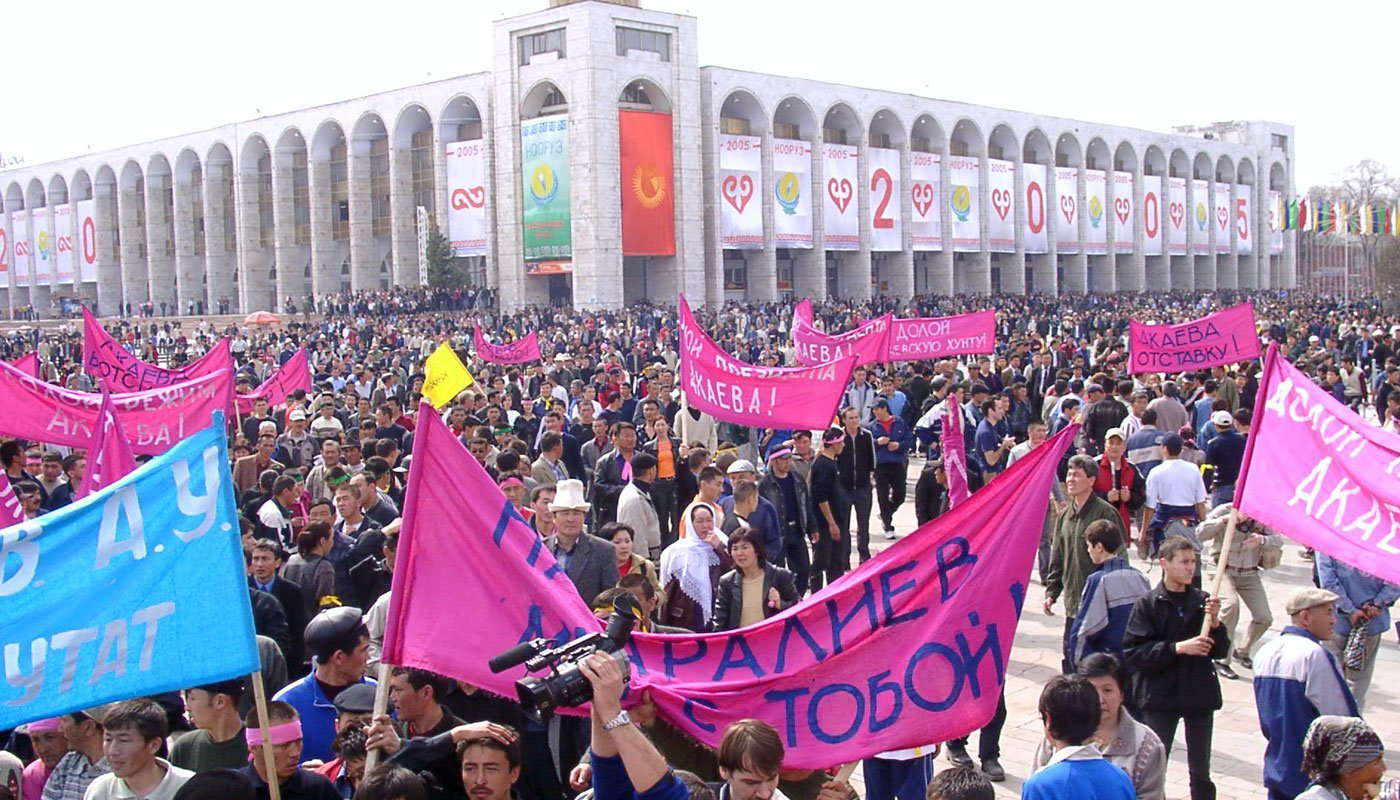
WHITE
White is generally associated with purity, cleanliness, and virtue. In the West, it is commonly worn by brides on their wedding day. However, in the East, white is associated with death and mourning. In a way, in both cases, white is a symbol of new beginnings; it is the blank canvas waiting to be written upon. White offers a sense of peace, comfort and hope, helping alleviate emotional upsets. This color also symbolises equality, unity, impartiality — it suggests fairness and neutrality. Finally, it can also represent efficiency and organisation: it’s clean and clinical, often worn by doctors, nurses and dentists.
Women’s protests — Belarus, 2020
In August 2020, Belarusian women adopted white flowers as powerful symbols of peace to pursue protests to contest the reelection of longtime authoritarian President Alexander Lukashenko. The protesters claimed that the vote was rigged to extend the 26-year rule of the leader. Dressed in white, more than 100 women carrying flowers and portraits of their loved ones marched and formed solidarity chains in the streets of Minsk, where police had shot rubber bullets at people chanting and clapping on balconies. The rallies were also joined by workers of all genders; priests, medics, reporters of State media, and more.
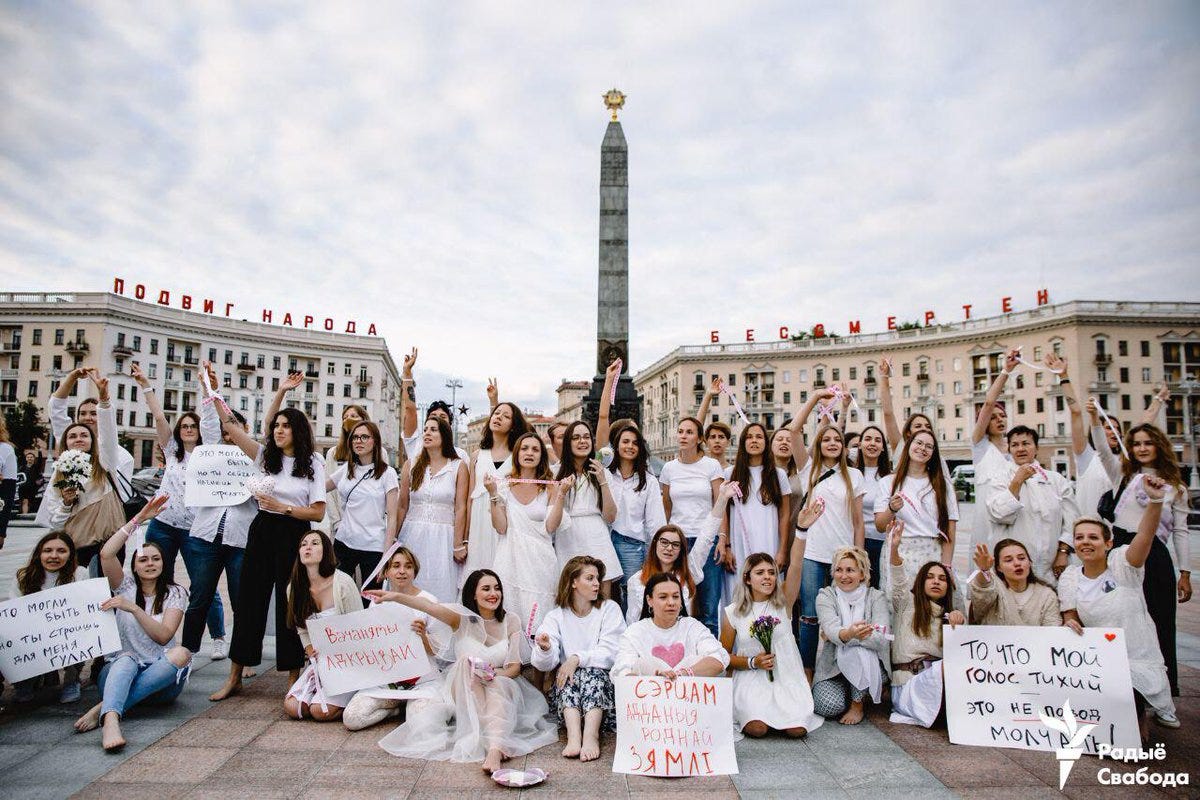

Student pro-democracy protests — Thailand, 2020
Before the the election of Prime Minister Prayuth Chan-Ocha in 2014, Bangkok was roiled by more than a decade of often violent clashes between royalist protesters (yellow shirts) and loyals to former Prime Minister Thaksin Shinawatra (red shirts). After that, Thailand experienced several protests against the administration of Prayuth Chan-Ocha. In 2020, more than 10.000 protesters rallied in Bangkok, causing the biggest anti-government demonstration since 2014. Students joined the demonstrations too, adopting white doves as symbol of peace in these anti-government rallies. They were calling for the departure of Prayuth Chan-Ocha, a new Constitution, and an end to the harassment of opposition activists. They were also asking for a new election, a new Parliament, and a monarchy that is truly under the Constitution. Some student groups even presented 10 reforms they seek to the monarchy.

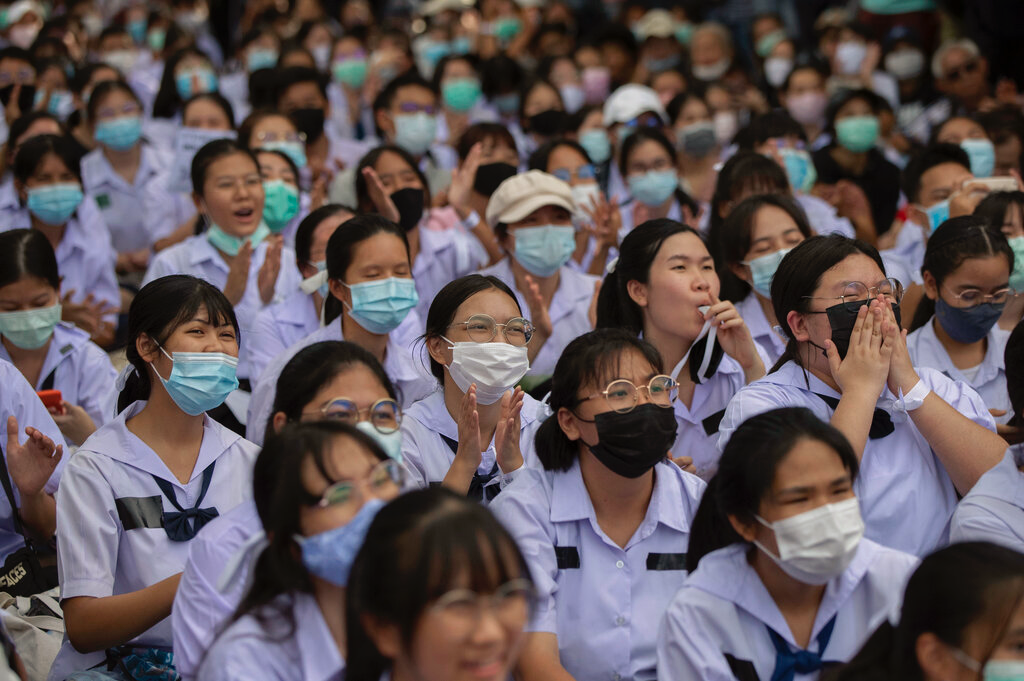
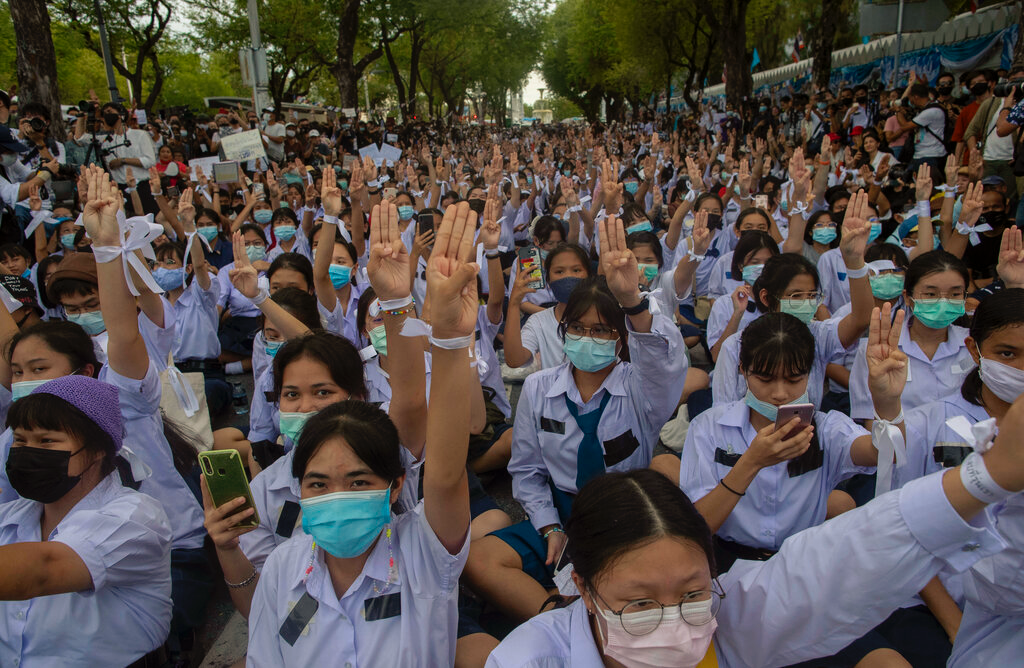
BLACK
Black conveys sophistication, power, drama, elegance, formality and mystery. But it also represents evil, darkness, and despair; that’s why in many countries black is associated with mourning and depression. However, black is also a color used to symbolise certainty and authority; in fact, in color psychology, black means power and control. Black is often seen as intimidating, unfriendly and unapproachable because of the power it exudes. This color implies discipline, independence and a strong will.
Pro-democracy protests and rallies against China’s black clothing ban — Hong Kong, 2019
Black, chosen for its association with mourning and sorrow, is the color worn by hundreds of thousands of protesters who occupied the streets in Hong Kong in June 2019 to demand the city’s leader, Carrie Lam, step down, after she suspended an extradition law in a dramatic retreat. Black clothes soon became the uniform of the protest movement. Many protesters were even wearing black masks. In response, the Hong Kong government banned black masks at demonstrations. Later in October, in an apparent attempt at inconveniencing pro-democracy protesters, China banned the export of black clothing to Hong Kong — including underwear.
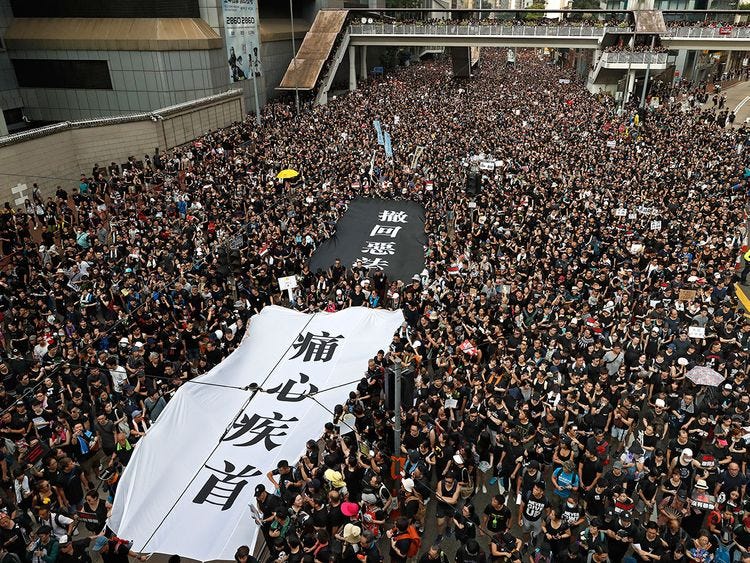
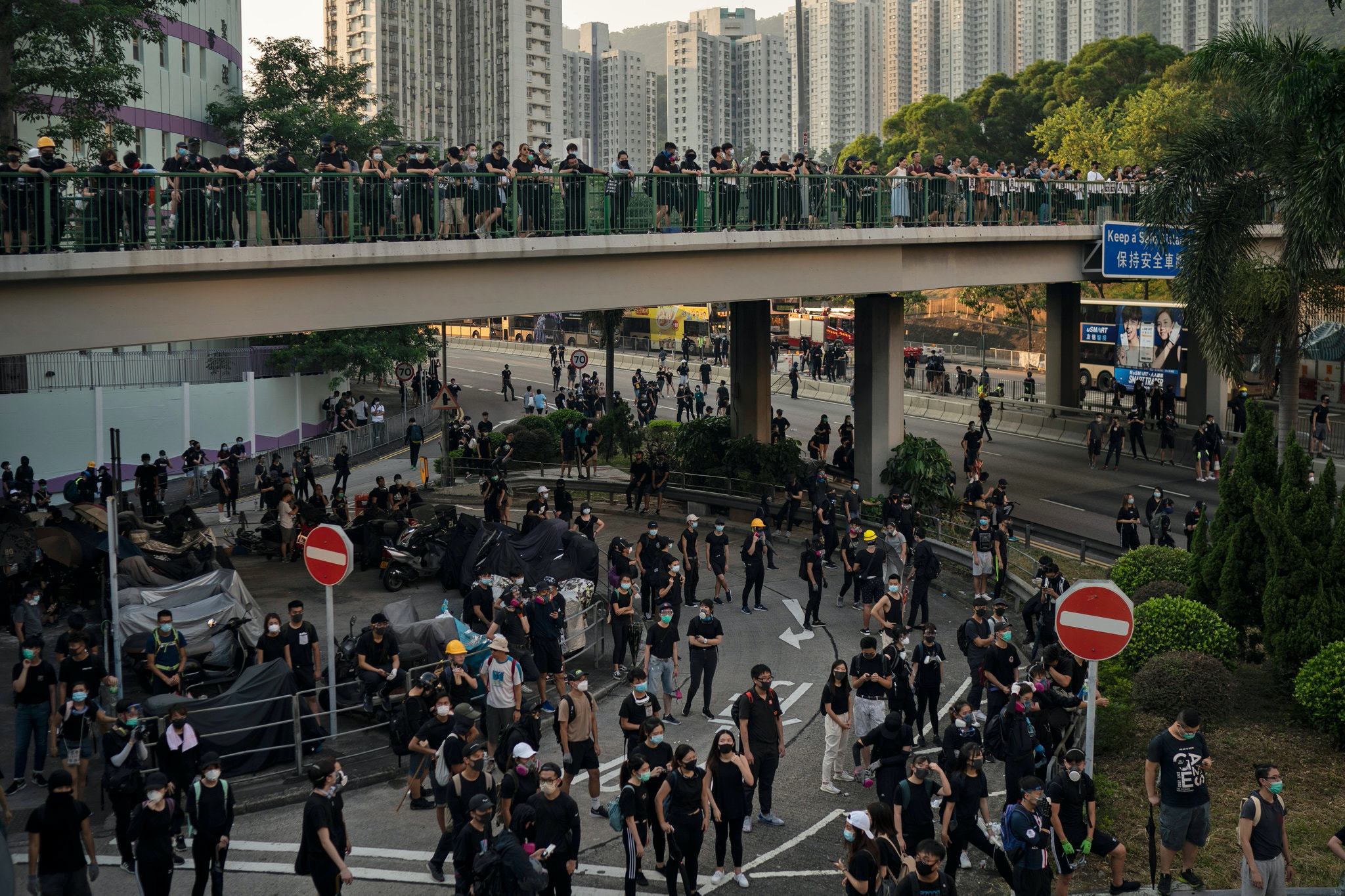
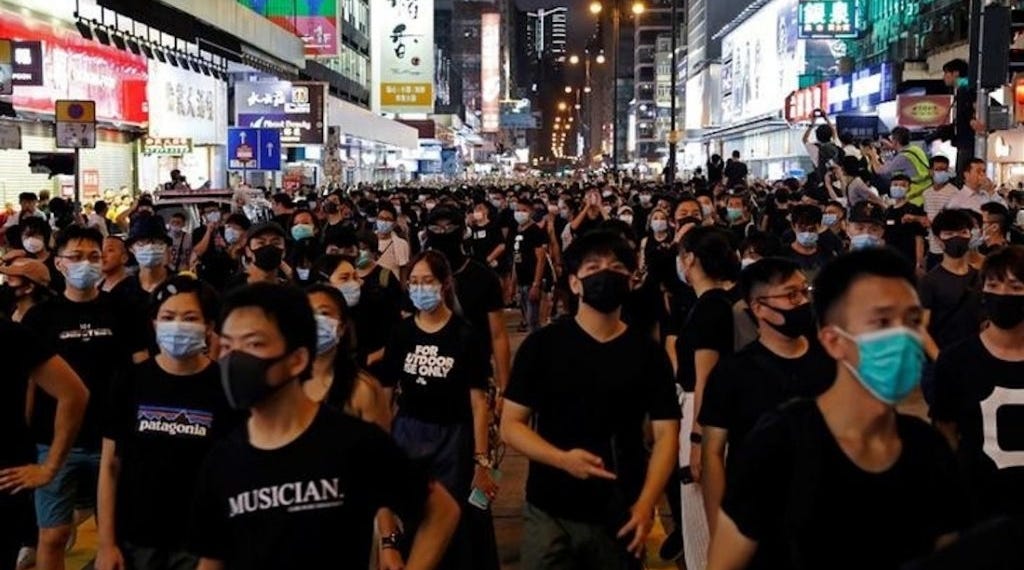
Black Lives Matter— Worldwide, 2020
Black Lives Matter (BLM) is a decentralised political and social movement protesting against incidents of police brutality and all racially motivated violence against black people. The symbol of the movement is in fact a black raised and clenched fist. In July 2013, the movement began with the use of the hashtag #BlackLivesMatter on social media after the shooting death of African-American teen Trayvon Martin. The movement became nationally recognised for street demonstrations in 2014, and in 2020 it gained further international attention due to the killing of George Floyd. An estimated 15 million to 26 million people participated in the 2020 BLM protests in USA, making it one of the largest movements in the country’s history.
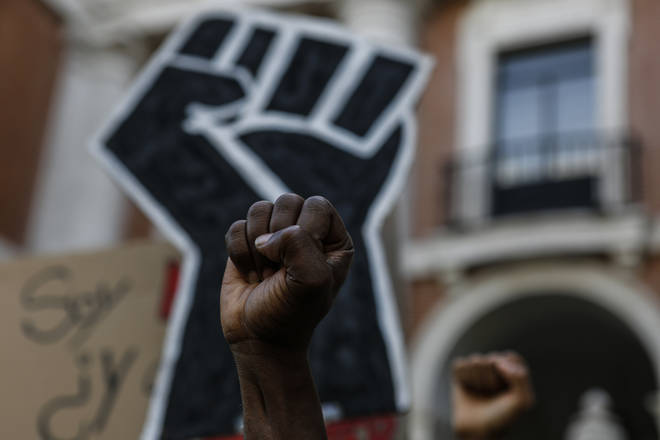
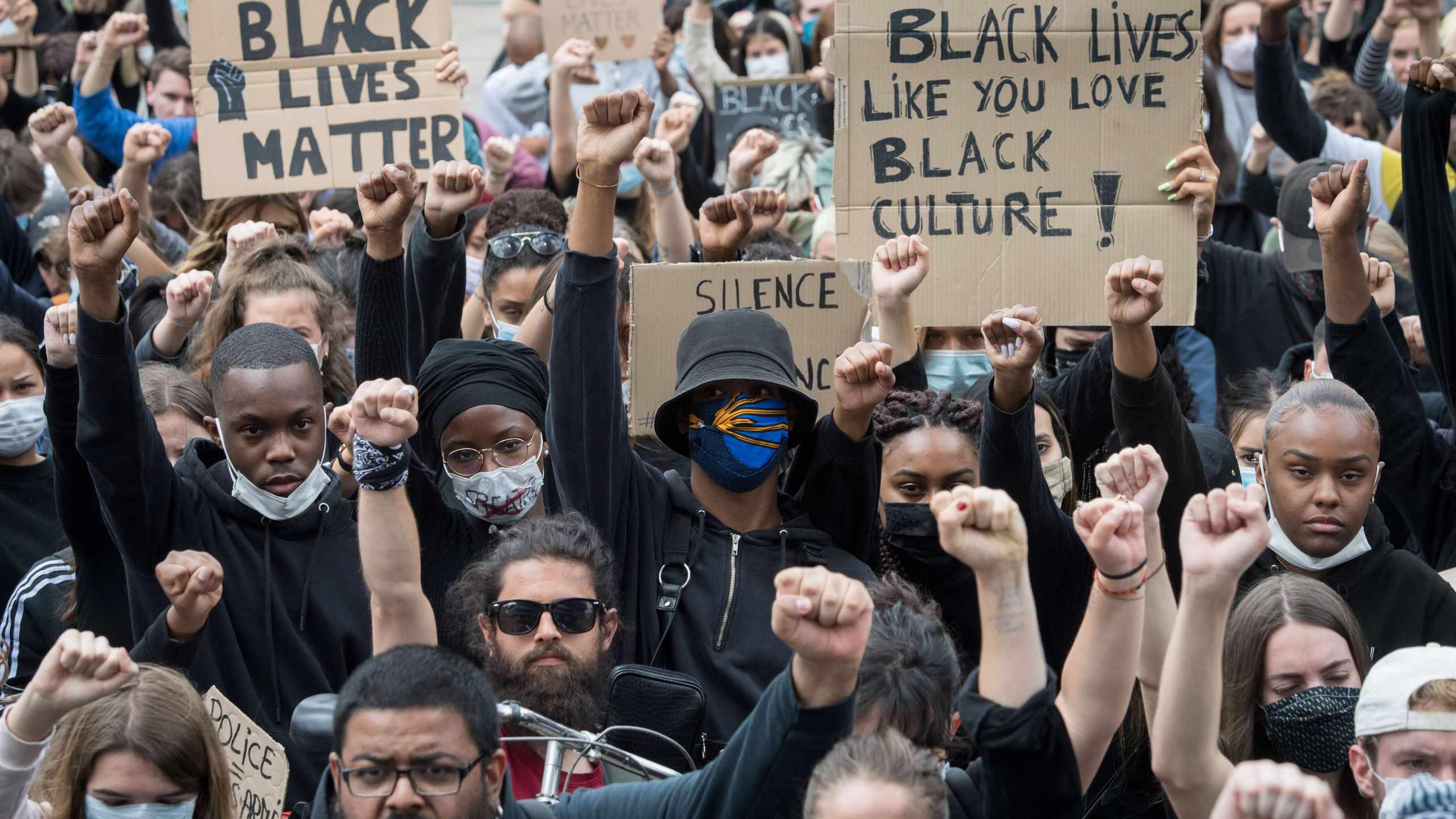
Global Protest Tracker
To keep an eye on the protests happening around the globe check out Carnegie Endowment. This website allows you to see the size, the duration, the trigger and the nature of the protests happening in the world. There is no connection to colors, but it is a useful tool to stay up to date on what is happening across the globe and to learn more about what your local or national media might not always talk about.






